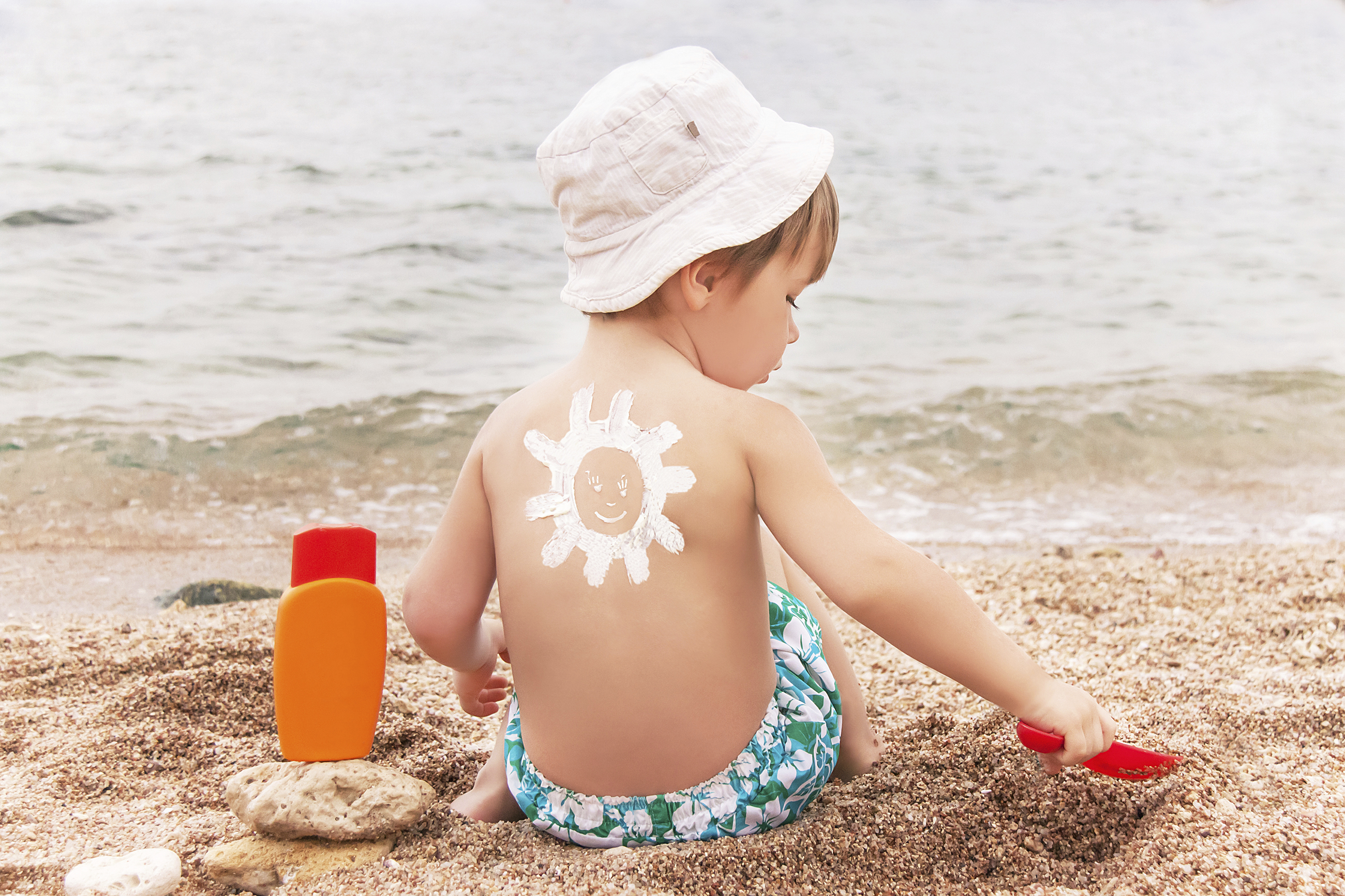 Store sunscreen displays make me feel like I forgot to study for a test. Maybe there’s an 'F' on my forehead as I struggle to pick the right protection for my family.
Store sunscreen displays make me feel like I forgot to study for a test. Maybe there’s an 'F' on my forehead as I struggle to pick the right protection for my family.Turns out, I’m not the only one failing the sunscreen knowledge exam. According to a survey done at Northwestern University Feinberg School of Medicine published on June 17th in JAMA Dermatology, only 43 percent of participants understood the definition of SPF value, and less than half of the 114 participants correctly identified terminology about how well the sunscreen protected against skin cancer, photoaging and sunburns.
In hopes of passing the test next time, here’s what parents really need to know about sunscreens, including up-to-date recommendations about ingredients to avoid, uva and uvb protection and whether sunscreen is enough protection against those glorious rays of sunshine.
The Environmental Working Group (EWG) has published a Sunscreen Guide every year since 2007; this year’s guide rates the safety and efficacy of more than 1,000 sunscreens, more than 600 daily moisturizers and 100 lip products with SPF values. The EWG outlines ingredients to avoid — oxybenzone and retinyl palmitate, the 11 worst sunscreens for kids, and the 217 beach and sport sunscreens that meet EWG’s criteria.
Of particular note is the Hall of Shame page. Here you will find lists of the sunscreens that “are not only a waste of money and time but also potentially harmful.” Alas, these sunscreen brands are the ones lining the shelves of mass retailers like Fred Meyer: Neutrogena, Banana Boat, Coppertone and NO-AD, to name a few.
In hopes of avoiding information overload, Dr. Wendy Sue Swanson, a general pediatrician and executive director of Digital Health at Seattle Children’s Hospital and a malignant melanoma survivor, offers our readers the 5 essential realities about protecting their children’s skin.
1. Sunscreen is only a part of sunscreen protection
“I think the future of how we protect kids (and all Americans) is using protective clothing. Use SPF-rated shirts (usually over 50) and hats, and don’t forget to find shade,” says Swanson. Limit sun exposure between the hours of 10 a.m. and 4 p.m., when sun intensity (UV radiation) is highest.
2. Apply sunscreen 20 minutes before sun exposure, and reapply it frequently
“The FDA is on your side because it now requires sunscreen companies to put a duration of protection on the bottle. Parents should really believe this information: if it says to reapply it every 45 minutes, reapply it this often,” Swanson says.
3. Buy sunscreen with these words on the label: broad spectrum
This means the lotion blocks UVB and UVA rays. The SPF (sun protection factor) only refers to UVB, which is what causes the skin to burn. “I agree with annoyance with the products that have a SPF of say 110, for example. That’s likely providing a false sense of security because any SPF over the number 30 is talking about the tiny difference between blocking UVB rays from 97 to 100 percent,” Swanson says.
SPF 30 blocks about 96 percent of the sun’s UVB rays if applied correctly, which usually means a shot glass full of sunscreen per person. UVA exposure is “also related to an increased risk of skin cancer, but unlike UVB, it’s not filtered by the ozone at all … it really leads to darkening and aging, because it penetrates deeper into the skin and has more influence in the collagen,” says dermatologist Roopal Kundu in a Time magazine article about the recent sunscreen study.

4. Yes, sprays are imperfect, but use the sunscreen you like best that works for your kids
“Almost all of the sprays have chemical ingredients; these can get into the lungs, and we don’t yet have research about what that means for our health. The safest route is to use only mineral sunscreens, but if using the spray is the only way you can get sunscreen on your child, use it,” Swanson says.
If you do use spray, be smart about how you use it. Don’t spray sunscreen near your child’s face; have them cover their eyes and hold their breath; don’t spray it in the wind; and always rub that lotion into the skin after you spray it on.
Mineral-based sunscreens are usually a combination of titanium and zinc, which are particles of metal that sit atop skin and block the sun’s ability to go into skin. “The reason we tell parents not to use chemical-based sunscreen before 6 months of age is that a baby’s skin barrier is not as thick and their body surface is bigger. Babies and young children absorb more of the chemicals than older children and adults. My boys are elementary-school-age, so I always use minerals on the face, neck and chest, but I often use aerosol on their limbs. If I had another baby, I’d use mineral sunscreen all over until they were past preschool-age,” Swanson says.
5. Download the free EPA SunWise UV Index smartphone app
This provides a local daily and hourly forecast of the UV radiation levels from the sun from a scale from 0 (low) to 11 or more (extremely high). Find app information here, along with what each number tells users about how to protect their skin from the sun. Then you won’t be fooled by a cloudy day, because looks can be deceiving when it comes to UV exposure.
“Heat and light have nothing to do with exposure to harmful rays from the sun. Near the equator the sun rays are always going to be intense, and while clouds cover some UV radiation, some still comes through the clouds. And what we know for sure is that early intense sun exposure is the major reason people develop skin cancers, skin aging and malignant melanoma later in life,” Swanson says.











